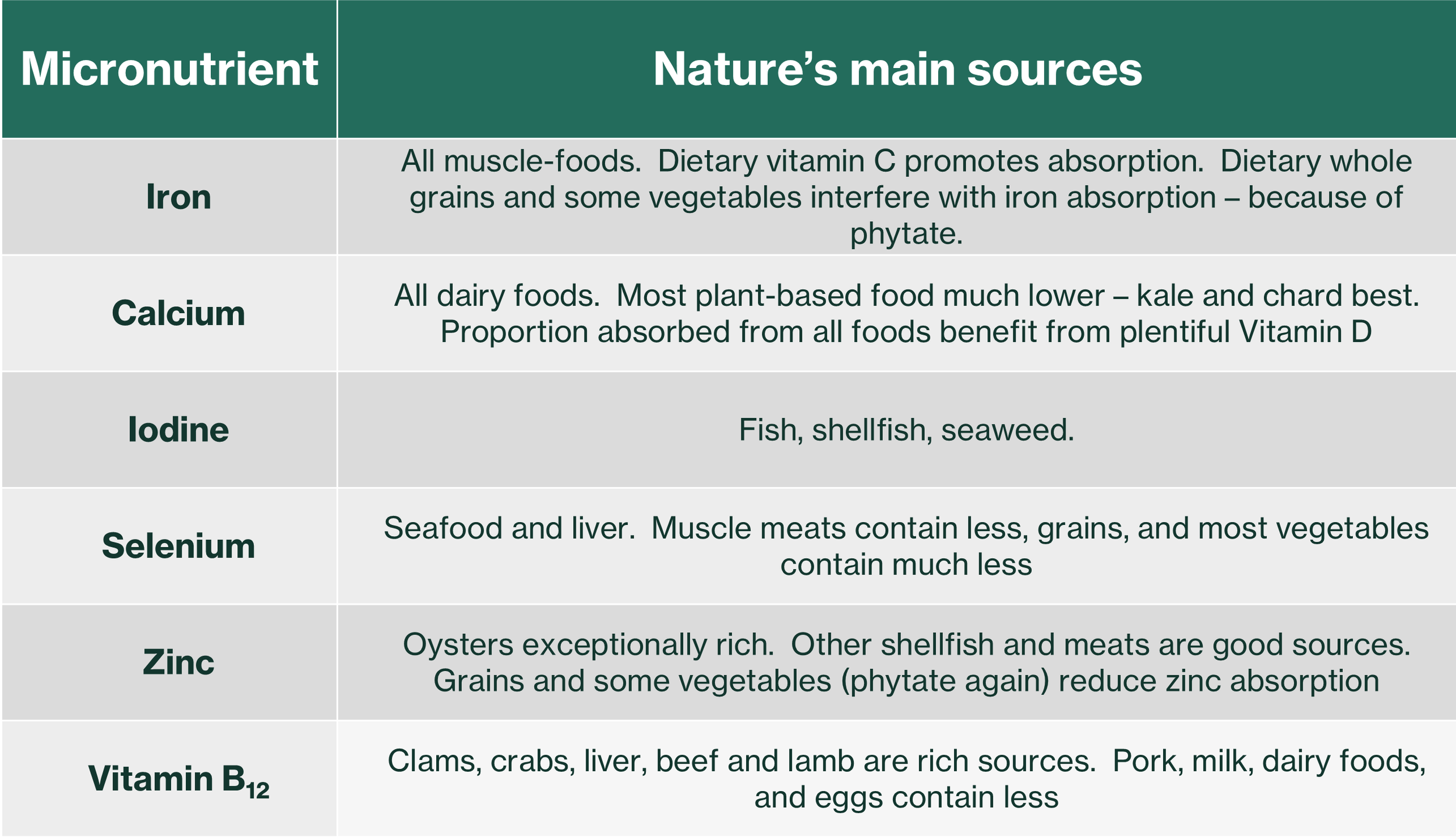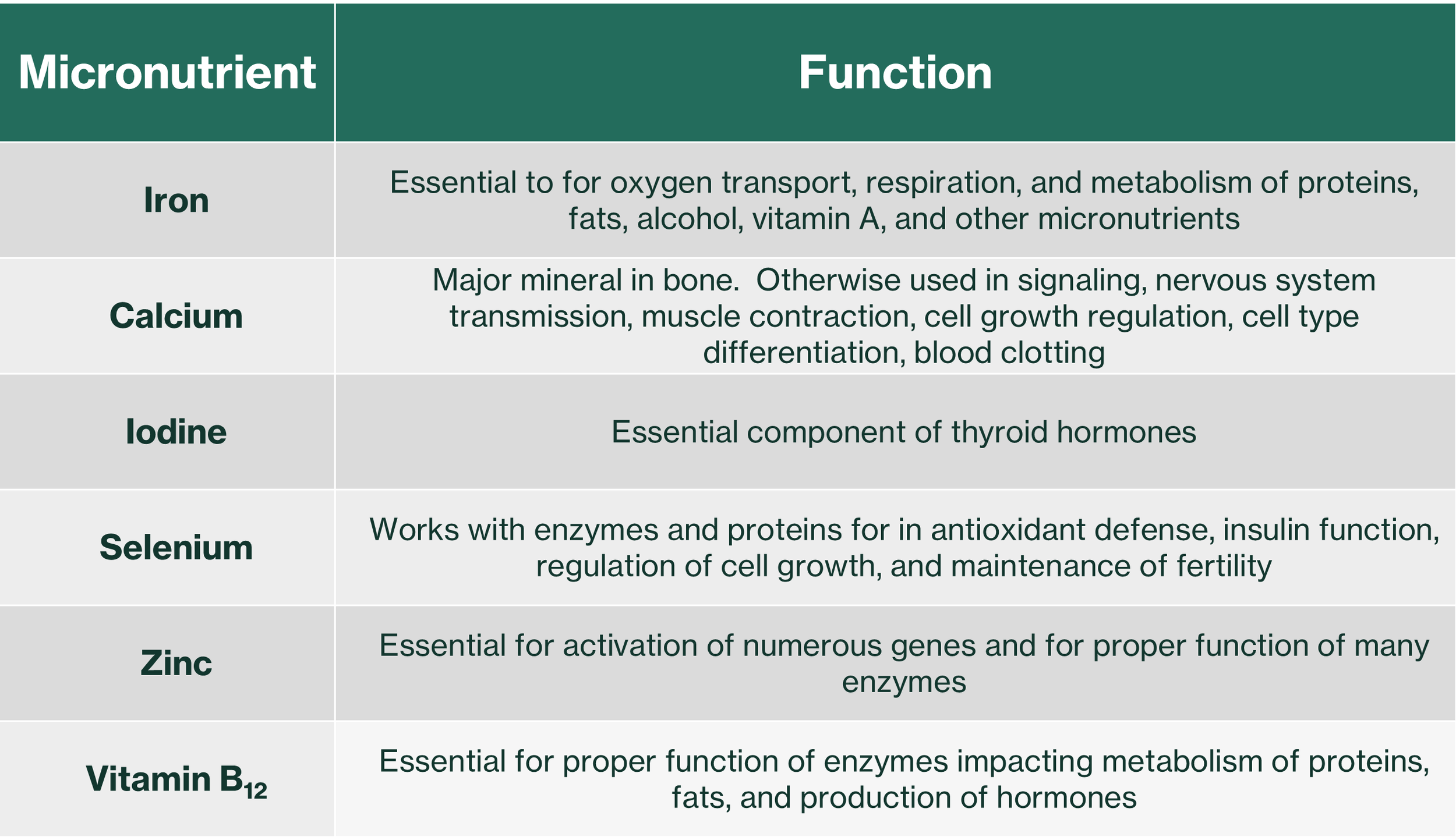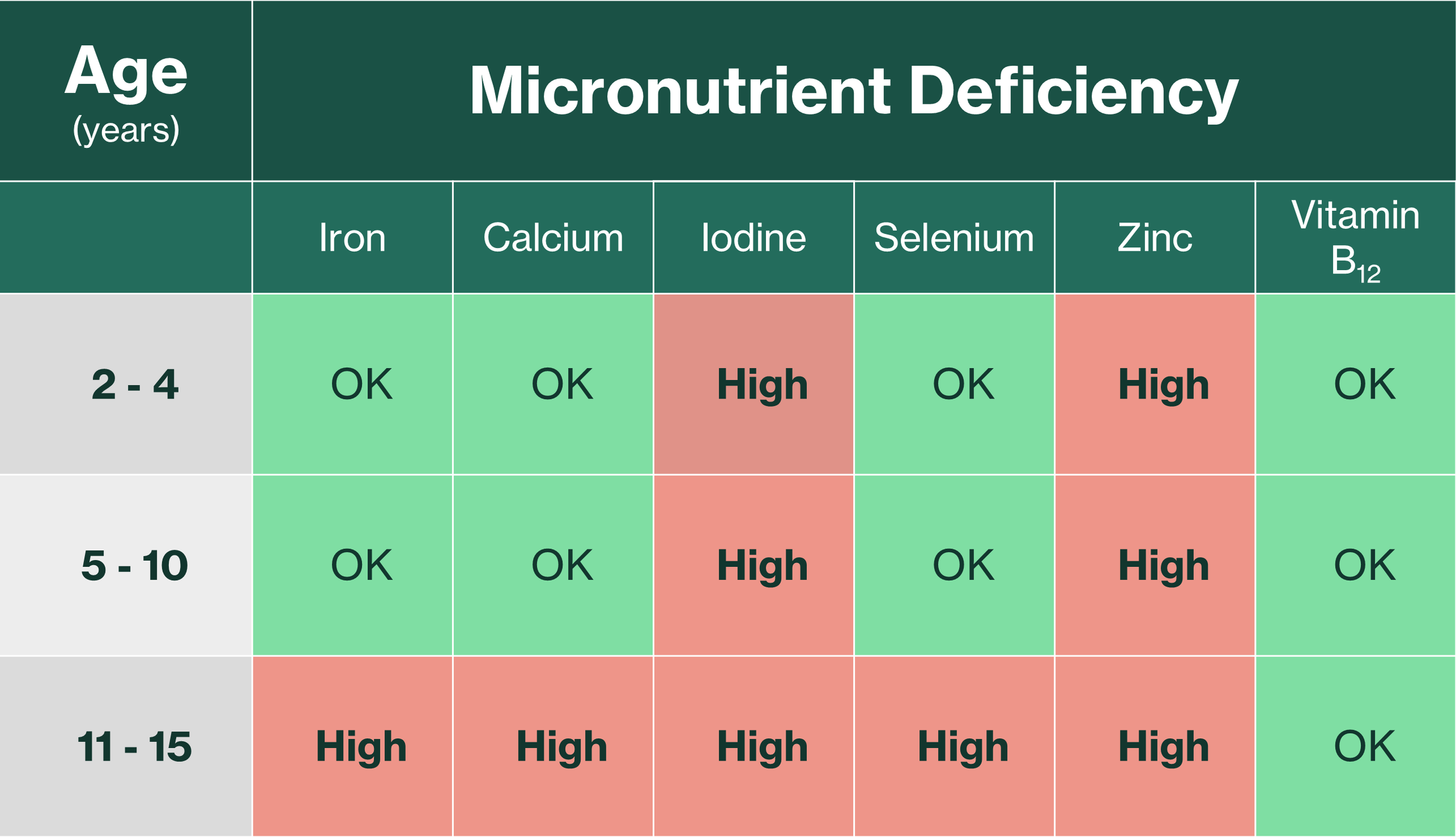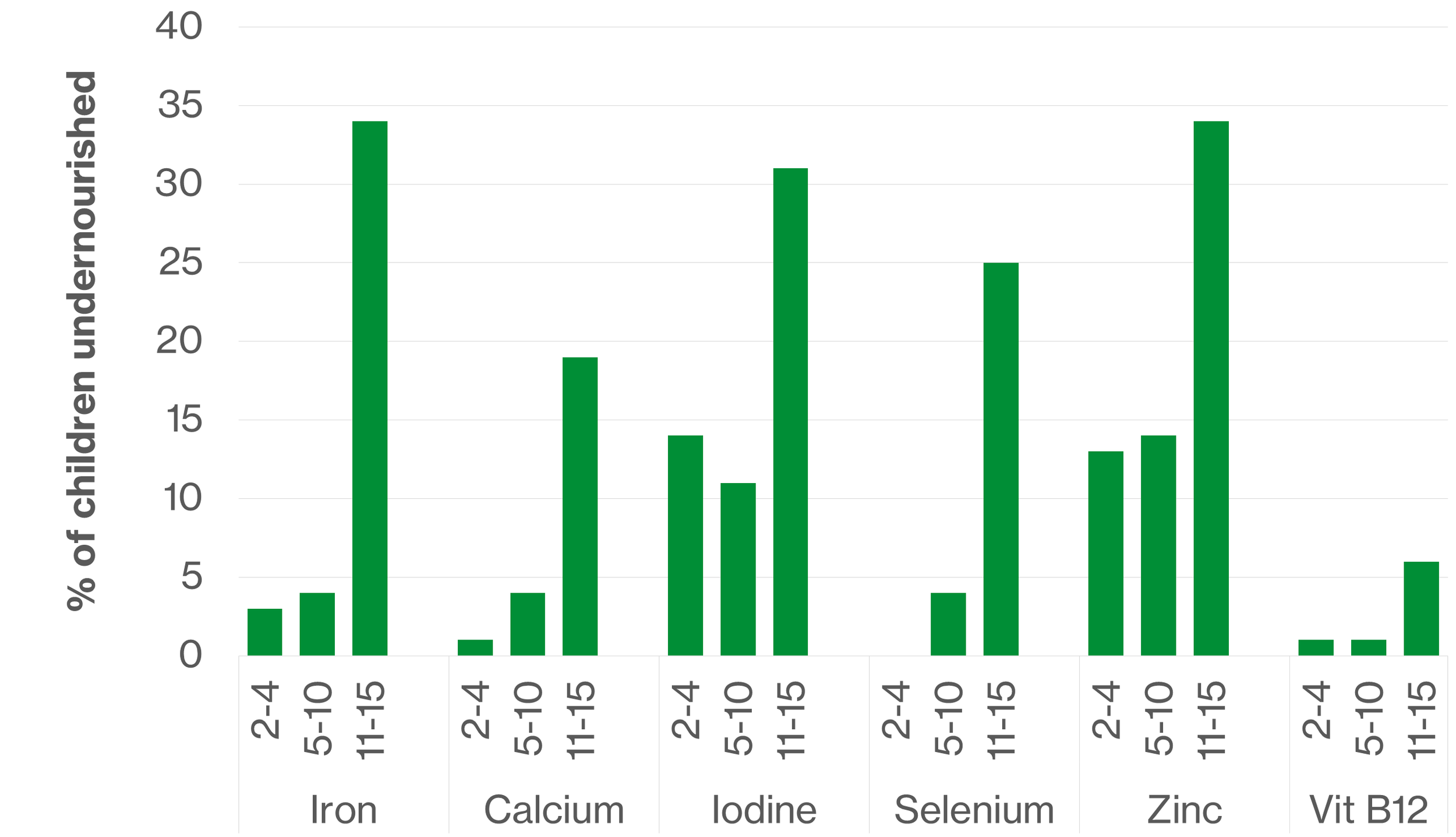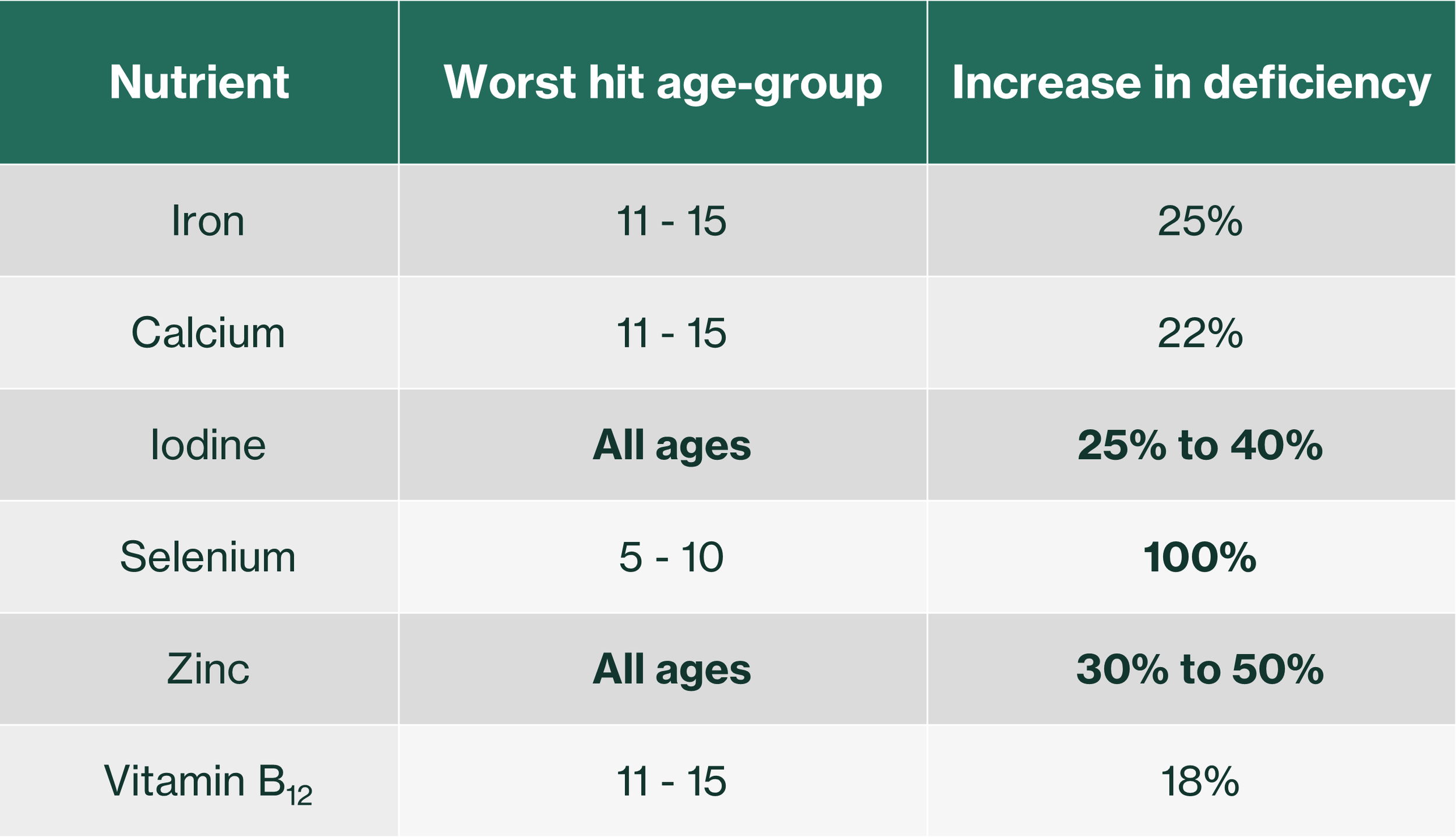Malnutrition in Scottish children
In a Nutshell
Scottish children currently suffer from micronutrient deficiency
Even a 20% cut in meat and dairy worsens every deficiency; iodine & zinc rise >20% across all ages
Root causes likely include modern farming, ultra-processed foods, and declining parental control with age
I stumbled across a LinkedIn Post by dietitian Carrie Ruxton, Ph.D. that seemed interesting. She describes an October 2025 report from Food Standards Scotland entitled Modelling the impact of reduction in meat and dairy consumption on nutrient intakes and greenhouse gas emissions in children and young people living in Scotland.
The context for the research is in the title of the report, and I’m not going to comment further on that. This is of interest to me because it describes what happens when we reduce animal-based food, something that we evolved to consume [2].
The nature of the investigation
Two modelling scenarios were tested as follows:
20% reduction in meat plus 20% reduction in dairy
35% reduction in meat plus 20% reduction in dairy
Selection of micronutrients
The project focused on one vitamin (B12) and five minerals (iron, calcium, iodine, selenium, zinc). They were chosen because meat and dairy are known sources of these micronutrients (Table 1, from reference 1).
The health functions [1] of the six micronutrients are summarized in Table 2.
Table 1: Table 1: Dietary sources of the six target micronutrients
Level of micronutrients considered risky
The study chose something called the Lower Reference Nutrient Intake (LRNI) as the cutoff value for the six targets micronutrients. This is the level of nutrition deemed necessary for just 2.5% of the population. This means that 97.5% of the population needs more micronutrients than the LRNI.
I think this means that this is the cutoff value below which even the most well-fed people will start to experience deficiencies.
Function of selected micronutrients
It’s fair to say that the micronutrients selected for study are essential for a healthy life [1] and any deficiency should be addressed (Table 2).
Table 2: The functions of micronutrients primarily derived from meat- and dairy-based food
Current Deficiencies (2024 baseline, LRNI cut-off)
The proportion of Scottish children currently experiencing deficiencies in target micronutrients is presented in Figure 1. Note that data is presented for each micronutrient in three age groups (2-4, 5-10, 11-15).
Figure 1: 2024 proportion Scottish children experiencing deficiencies of six target micronutrients
Table 3: Current micronutrient deficiencies in Scottish children using arbitrary threshold (OK = <5 % below LRNI; HIGH = >5 %)
We can take away the following:
Iodine & zinc are deficient across all ages
Teenagers (11–15) deficient in everything except B12
Younger children more protected
How can we explain these existing deficiencies?
I recently described Europe-wide micronutrient deficiency and summarized likely root causes:
Modern agricultural practice - lower mineral content in crops and animal products
Ultra-processed convenience foods - sandwiches, kebabs, burgers dominate teen diets
A shift to more plant-based diets – lesser micronutrient bioavailability
Limited understanding of malnutrition among medical professionals
The low levels of deficiency in the 2-4 and 5-10 age groups may arise because parents still have control over their younger children’s diets. Unfortunately, they may be unable to overcome the effects of agricultural practices, for example.
The teenage group deficiencies may arise from less parental control plus greater propensity to choose more processed- and plant-based-food. For example, the report points out that this age group was more likely to eat sandwiches, kebabs and hamburgers. They contain varying amounts of highly processed bread, buns, seed oils, and sugary dressings.
I propose additionally that Scottish children may not be eating enough seafood. This explains the universal iodine and zinc deficiencies.
Results of reducing meat and dairy in children’s diets
To keep things simple, I’m just considering the scenario in which 20% of meat and dairy consumption is reduced (Figure 2).
Figure 2: Proportion of Scottish children experiencing deficiencies of six target micronutrients after a modelled 20% reduction in meat and dairy consumption
Summarising in Table 4, we see that all children are likely to suffer from serious additional defiencies in iodine and zinc but teenagers are particularly vulnerable.
Table 4: Effect of modelled 20% reduction in meat and dairy
Health risks of micronutrient shortfalls
The potential [1] harm caused by deficiencies is summarized in Table 5.
Table 5: Age-unrelated effects of deficiencies in the six micronutrients
However, children are especially vulnerable – lets translate those general problems into child-specific concerns (Table 6).
Table 6: Children-specific risks of micronutrient deficiencies
Other studies of interest
I’ll probably write more on the subject of micronutrient deficiencies in food as it seems to be a popular topic these days. Until then, if you want to find out more for yourself, try the following:
My recent update with links to previous articles
Increasing Nutrient Density of Food Crops Through Soil Fertility Management and Cultivar Selection
Summary
This study shows two things. As things stand, many Scottish children suffer from a lack of essential dietary micronutrients. Secondly, reducing the amount of meat and dairy consumed by children in Scotland, is likely to make existing malnutrition worse.
It’s difficult to say more about this study because most, if not all, of the foodstuffs chosen to represent meat and dairy contained much industrially processed ingredients. It is also unfortunate that a study of iodine and zinc did not investigate ingestion of seafood, the primary source of those two micronutrients.
References
Kohlmeier, M (2015) Nutrient Metabolism: Structures, Functions, and Genes. Second Edition. Amsterdam, Elsevier
Ben-Dor M, Sirtoli R, Barkai R. The evolution of the human trophic level during the Pleistocene. Am J Phys Anthropol. 2021 Aug;175 Suppl 72:27-56. doi: 10.1002/ajpa.24247. Epub 2021 Mar 5. PMID: 33675083.

